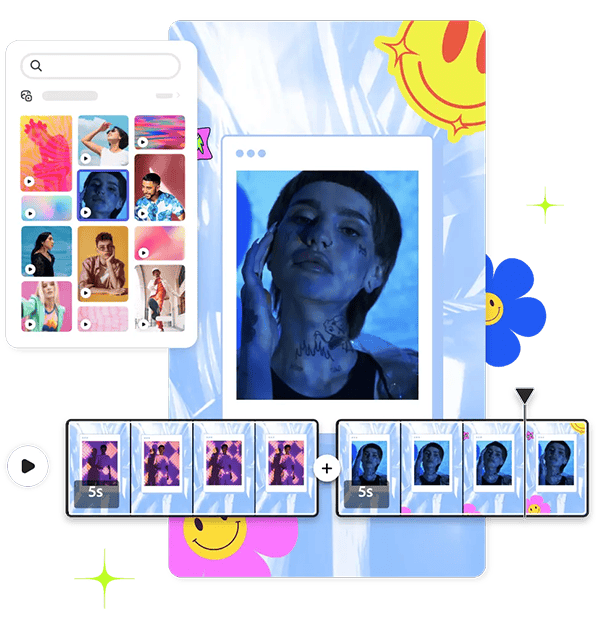Higher education institutions are struggling with how to prepare students for a rapidly changing career landscape, how to better engage and teach students whose learning was disrupted during the pandemic, and how to assess students’ learning in more authentic and meaningful ways.
In the latest Adobe Express + Firefly webinar, the Adobe Education team is sharing innovative ways that institutions are using creative and generative AI technologies to address these challenges. Indiana University Professor Justin Hodgson kicked off the series by discussing how he and fellow faculty are reimagining the way they assess student work with techniques that enhance the learning experience.
The benefits of teaching digital creativity
Hodgson directs IU’s Digital Gardner Initiative, a system-wide series of programs designed to integrate digital literacy, digital creativity, and digital learning into the curriculum. He began by talking about why it’s important for students to engage with creative technologies.
“It’s not just that they can express themselves differently,” he said. “These technologies also allow students to engage in course content and practices and procedures in new and exciting ways, which is sometimes enough to reinforce their learning.”
He shared a three-part structure for how higher ed leaders and faculty can think about digital creativity:
- Institutions have a responsibility to teach students to use digital technologies.
- Using creative technologies in the classroom improves student engagement, retention, and performance, particularly for minority and first-generation students. See the Civitas study
- Teaching digital creativity helps close the digital divide, ensuring that students from disadvantaged backgrounds can become career-ready.
How digital projects enhance learning
Hodgson introduced Adobe Express, the all-in-one AI content creation app, and Adobe Firefly, the generative AI engine that powers a range of creative tools within the app. He highlighted how easy-to-use Adobe Express allows all students to express themselves in creative, visual ways and, in his own words, offers "a meaningful starting point for trying to bridge that gap and level the playing field among students who have been disadvantaged in terms of access.”
He showed project examples from colleagues, including one that involves having science students use generative AI to visualize themselves in their future careers. In another, nursing students in a statistics class were tasked with creating simple character animations to explain different statistical sampling methods to their peers. The class ultimately held an “awards show” and voted on which projects were most effective.
“What’s exciting for me,” Hodgson said, “is that this turns learning into a kind of critical engagement, a collaborative process, and a little bit of competition, which are all good things.”
Hodgson then introduced Mia Freeman, an undergraduate student pursuing dual degrees in neuroscience and business as well as a minor in public advocacy and communication. She shared a project from one of Hodgson’s courses, where she used Minecraft EDU to build a monument to the history of medicine. Her project details what she called medicine’s “shames and fames,” from the Tuskegee Syphilis experiments to the development of the first vaccine.
Within her monument, Freeman included discovery elements with links to external information and videos. “This was part of my goal to implement more experiential aspects for people with different learning types,” she said. She also created a web page in Adobe Express to summarize her project and learning outcomes.
Freeman said that as a student who wasn’t particularly tech-savvy, the experience was transformative in two ways. First, she built confidence in her ability to learn new technologies. “It’s crucial for not just the current generation but also upcoming generations to be digitally literate,” she said. “We need the ability to become creators and collaborators in this digital space rather than just consumers.”
Second, she said her digital project transformed her thought processes. “I was able to achieve a depth of understanding that would have been impossible with writing alone, since I had to experience and be a lot more hands-on in this learning process,” she said. “It reshaped how I approach creativity and problem-solving.”
Exploring different approaches to classroom assessment
Next, Hodgson surveyed some newer methods of assessing student work. He discussed the merits of ungrading, in which teachers give students feedback, let them reflect on their learning and explain their choices, and then propose their own grades. He covered specs grading, where teachers provide explicit specifications for what it takes to earn an A versus a B or C, allowing students to choose the level of success they want and then work to meet it. And he talked about the Kuhn+2 model for assessing digital projects, which involves using a set of interrelated criteria and questions around a project’s conceptual core, research component, form and content, and more.
Hodgson said that by encouraging innovative learning methods for students across disciplines, and by assessing that learning with alternative grading models, higher education leaders and faculty can help students develop a host of essential career-ready skills. For more details, explore his webinar presentation.
And to learn more about driving student engagement and building career readiness with new creative technologies, register for our upcoming Adobe Express + Firefly webinar sessions.


